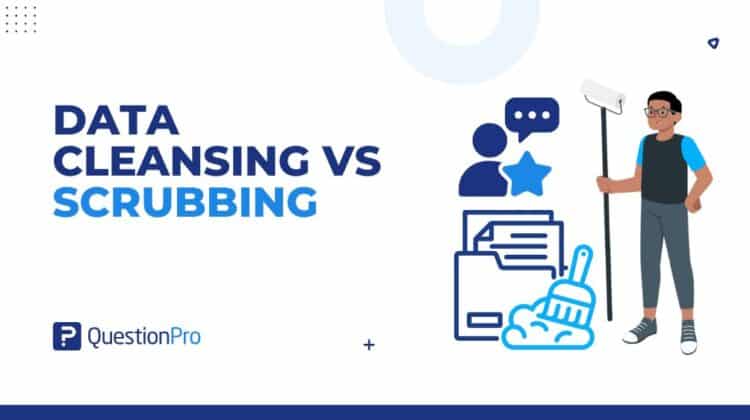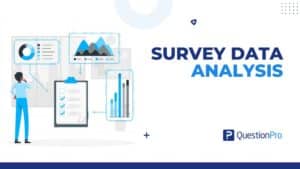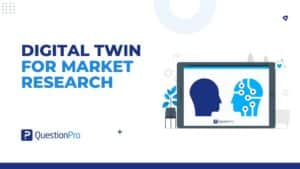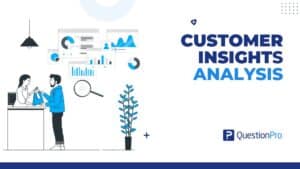
When it comes to handling your data, knowing the difference between data cleansing vs scrubbing can make a huge difference in the quality of your results. Both are important steps, but they serve different purposes, and mixing them up can lead to wasted time or unreliable insights.
Think of your data like a messy closet. Data cleansing is like fixing torn clothes and organizing everything neatly, while data scrubbing is about tossing out what you no longer need. Together, they help you create a clean, reliable dataset that you can confidently use.
In this blog, you’ll learn exactly what sets data cleansing and scrubbing apart, how each one works, and why combining them is the best way to ensure your survey data is accurate and useful.
What is Data Cleansing?
Data cleansing, also known as data cleaning, involves ensuring that your data is accurate, consistent, and ready for use. It’s like giving your messy data a much-needed tidy-up so you can trust it for data analysis and data-driven decision-making.
When you work with data, it’s common to find mistakes, missing details, or entries that don’t match up. If you leave these problems as they are, your reports and insights can be completely off. To avoid that, you take the extra step of cleaning and refining your data until it’s clear, correct, and reliable.
In this process, you might:
- Correct structural errors: Fix typos, spelling mistakes, or wrong values.
- Handle missing values: Fill in gaps with accurate information or mark them as “unknown.”
- Normalize formats: Make sure everything looks the same, like standardizing date formats or phone numbers.
Let’s say you ran a survey and asked for respondents’ locations. One person typed “New York,” another wrote “NY,” and someone else added “newyork.” Without cleaning, your analysis might treat them as three different places. With clean data, you’d standardize all of them to “New York,” making your results much more accurate.
Data cleansing makes sure you’re working with information you can actually trust because good data leads to better decisions.
What is Data Scrubbing?
Data scrubbing is the process of going through your dataset and removing anything that’s outdated, irrelevant, or duplicated. While data cleansing is more about correcting and standardizing information, scrubbing focuses on getting rid of the stuff you don’t need or can’t trust anymore, like inconsistent data.
When you scrub data, you might:
- Delete duplicate records so the same entry doesn’t show up twice.
- Remove outdated information that’s no longer accurate.
- Get rid of irrelevant, invalid, or incomplete data that could distort your results.
If you have a survey panel list with thousands of email addresses, scrubbing might involve removing ones that bounce back, are no longer in use, or clearly aren’t valid. This way, you’re only keeping contact details that are active and usable.
Scrubbing is a lifesaver when you’re preparing to send out surveys. It ensures you’re not wasting time or money contacting people who won’t respond or whose data isn’t relevant anymore.
For example, before launching a new survey campaign, you can scrub your list so only valid, engaged, and up-to-date participants remain. This not only improves your response rate but also gives you cleaner, more reliable results.
What You Might Like: Data Orchestration: From Raw Responses to Real-Time Insights
Data Cleansing vs Data Scrubbing
At first glance, Data cleansing and data scrubbing might sound like the same thing, and yes, they’re closely related, but they’re not identical. Both aim to improve data quality, but the scope, level of detail, and timing in the data lifecycle are a bit different.
If you think of your data as a house, data cleansing is like repairing and repainting the walls, while data scrubbing is like removing all the junk you don’t need anymore. Both make the space better, but they do it in different ways.
Scope and Purpose
- Data cleansing focuses on correcting and standardizing the data you already have so it’s accurate and consistent.
- Data scrubbing is all about removing outdated, irrelevant, or duplicate records so you’re left with only useful information.
Level of Detail and Transformation
- Cleansing often involves deep changes, like fixing typos, standardizing formats, or filling in missing data.
- Scrubbing is usually less about data transformation and more about deletion, getting rid of anything that’s no longer valid.
Timing in the Data Lifecycle
- Cleansing can happen at multiple stages right after data is collected, during data analysis, or before storage.
- Scrubbing usually happens before sending out communications or running a new campaign, ensuring you’re working only with active, relevant data.
To make things crystal clear, let’s put data cleansing and data scrubbing side by side. This way, you can quickly see how they differ in purpose, scope, and timing and decide which one (or both) you need for your data projects.
| Criteria | Data Cleansing | Data Scrubbing |
| Purpose | Correct and standardize data to improve accuracy. | Remove outdated, irrelevant, or duplicate data. |
| Scope | Broad—covers fixing errors, formatting, and filling gaps. | Narrow—focuses on eliminating unusable data. |
| Level of Detail | Involves detailed corrections and transformations. | Primarily deletion or removal of bad data. |
| Timing | It can occur at multiple points in the data lifecycle. | Often done before sending surveys or launching campaigns. |
| Example | Fixing inconsistent date formats like “01/02/25” and “Feb 1, 2025” so they follow the same style. | Removing records of survey participants who haven’t responded in over a year. |
Next Read: Data Cleansing vs Data Cleaning: Differences & Use Cases
Best Practices for Both Processes in Survey Operations
If you want your survey data to be reliable and ready for action, data management teams know that you can’t just stop at either cleansing or scrubbing; you need both. The secret is knowing how to combine them and using the right data cleansing tools and data scrubbing tools to make the process faster and easier.
1. Combine Cleansing and Scrubbing for Maximum Data Quality
Think of cleansing and scrubbing as a two-step quality check. First, scrub your data to remove anything irrelevant, outdated, or duplicated. This ensures you’re not wasting time on entries that shouldn’t be there in the first place. Then, cleanse the remaining data to fix mistakes, fill gaps, and standardize formats. The result? A dataset that’s not only valid but also perfectly consistent.
2. Automate with Survey Platforms, APIs, and Data Integration Tools
Doing everything manually can be slow and error-prone. Many survey platforms already have built-in tools for cleaning and scrubbing data automatically.
You can also connect your survey tool with APIs or data integration platforms (like Zapier or Make) to run automated checks, flag invalid entries, and update records in real-time. Automation saves you hours of work and reduces the risk of human error.
3. Real-World Workflow Example
Here’s how it might look in a real survey project:
- Survey: You send out your questionnaire to your target audience.
- Scrubbing: After responses come in, you remove duplicate entries, invalid contact details, or irrelevant participants.
- Cleansing: You fix spelling errors, fill in missing demographic details, and make sure formats are consistent.
- Analysis: Now that your data is clean, you run your analysis knowing the results are accurate and trustworthy.
Following this process ensures you’re basing your survey insights on data that’s both relevant and reliable, so you can make decisions with confidence.
Explore Further: Using data quality tool for your surveys
Conclusion
Understanding the difference between data cleansing vs scrubbing can really level up how you handle your survey data. Cleansing helps you fix and standardize your data so it’s accurate, while scrubbing makes sure you’re only working with relevant and valid information by removing duplicates or outdated records.
By combining both processes and using automation tools where you can, you set yourself up for cleaner, more reliable data that leads to smarter decisions and better insights. Whether you’re just starting out or managing large surveys, following a clear workflow of scrubbing first, then cleansing, will save you time and headaches down the road.
If you’re looking for a tool that can help automate and simplify both the data cleansing process and data scrubbing process, QuestionPro offers powerful survey and data management features designed to keep your data accurate, clean, and ready for analysis, saving you time and boosting your survey success.
Frequently Asked Questions (FAQs)
Answer: Use data scrubbing first to remove bad or irrelevant data, then apply data cleansing to fix and standardize the remaining data for analysis.
Answer: Yes! Many survey platforms and data tools offer automation features for both cleansing and scrubbing to save time and reduce errors.
Answer: Scrubbing ensures you only work with valid and relevant survey respondents, improving response rates and data accuracy.
Answer: No, data cleansing also involves filling missing values and validating data consistency to ensure accuracy.
Answer: Together, they improve data quality, leading to more reliable insights and better decision-making from your surveys.







